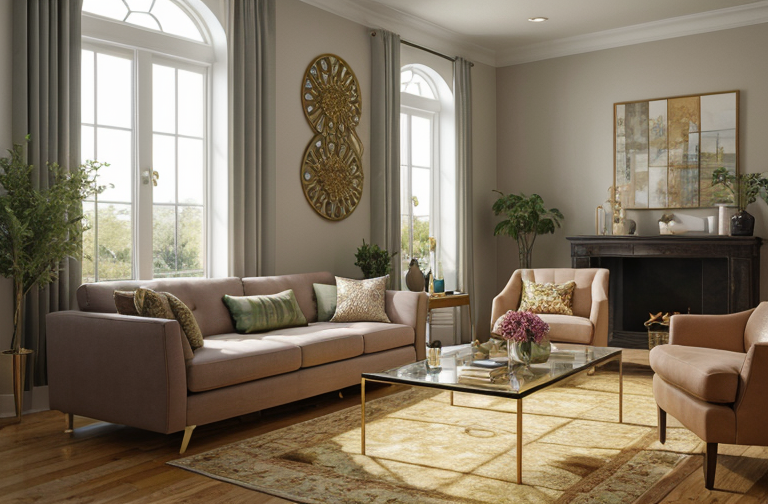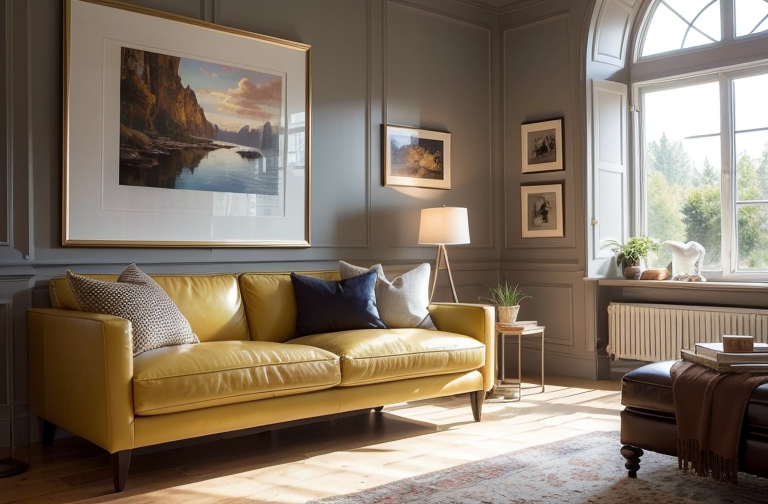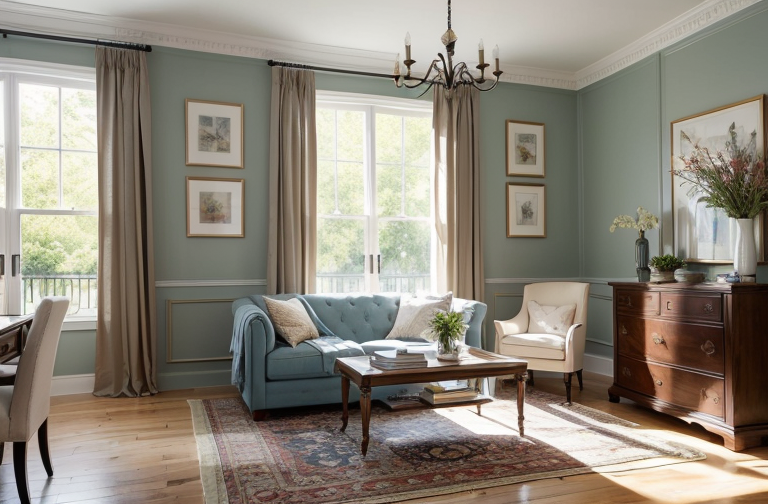Unveiling the Art of Japanese Design: From Minimalism to Nature Integration in Homes

The article discusses Japanese home design principles like privacy, nature-focus, simplicity, and use of natural materials. It further explores their global influence, unique furniture and tranquil bathing areas.
Private and Unique Home Design in Japan
As an interior designer, the japanese style house interior design fascinates me. Each intricate detail carries a story of the intentional beauty built deeply into the nation’s architecture.
Characteristics of Unique Japanese Home Designs
For instance, the innovative minds like NKS2 design homes with round wooden exterior walls, a testament to the uniqueness characteristic of Japanese home designs. This creatively intelligent decision isn’t solely for aesthetic pleasure, but also caters to privacy and noise isolation. Appreciating how designers handle these practical aspects is something I enjoy exploring in design publications in my free time.
Importance of Privacy in Japanese Home Design
With the Japanese, there’s a deep seated importance of privacy in home design. This is frequently demonstrated in the elements of a private courtyard nestled within the building fabric; a serene space away from prying eyes. The satisfaction I derive from this exquisite esthetic feels warm, similar to the joy I get from my DIY projects.
Use of Sunlight in Design
Sunlight also plays a significant role. Timeless in its appeal, the intentional usage of sunlight in a Japanese home design minimizes reliance on artificial lighting. Thus, enhancing the natural elements of the home in a manner that effortlessly blends beauty with practicality. The way Japanese architecture places value on the interplay of light, space, and texture echoes my passion for creating spaces that tell unique stories.
In the grand scheme of things, a japanese style house interior design is a masterpiece of artistry that shapes aesthetic perception, establishing a sanctuary where form and function harmoniously co exist. The process of curating such a space intrigues and motivates me as an interior designer.

Focus on Nature in Japanese Design Principles
Channeling my Parsons educated professional experience, one considerable aspect that elevates the artistry incorporated in a japanese small house interior design is the enchanting knitting of the indoors with the outdoors. This unmistakable principle essentially fosters a deep harmony within homes and their surroundings, making the spaces echo with authenticity and tranquility.
Principle of Bringing Outdoors Indoors
Directly transferring the vibrance of nature indoors, we often find elements such as natural stones or water bodies within Japanese designed homes. The thoughtfully embedded elements help to breath life into the previously static environment, endowing vitality and a characteristically organic touch.
Importance of Natural Light and Greenery
One pronounced feature of Japanese design is the frequent emphasis on the infusion of natural light and greenery. A well positioned window overlooking a lush garden, an array of indoor plants enlivening a corner, or a well lit airy room fosters a refreshing aura, which in turn, crafts a more closely knit relationship with nature.
Concept of ’Borrowed Scenery’ in Japanese Interior Design
What truly intrigues me is the way Japanese interior design borrows the scenery from outdoors to amplify the aesthetic appeal indoors. Be it a strategically positioned mirror reflecting the allure of the outdoor landscape in the living room, or a wide patio window unfolding a stunning panorama of cherry blossoms, the concept of ’borrowed scenery’ beautifully blurs the line between the inside and outside.
The blend and seamless symbiosis of these elements create a version of spatial aesthetics that aren’t merely a reflection of minimalism, but also breathe life with their organic touch in a japanese small house interior design, making this style fascinatingly unique.

Simplicity and Minimalism in Japanese Interior Design
As someone deeply immersed in interior design, I’ve always appreciated the minimalist, open plan designs prevalent in the interior design of japanese house. Their approach brings out the essence of simplicity, creating spaces that exude tranquility.🕊️🏠
Emphasis on Minimalist, Open-Plan Designs
In my experience, Japanese interiors make magnificent use of minimalistic design. By adopting open plan designs, they emphasize airiness, space, and a fluid connection between different sections of the house. This minimalism perfectly encapsulates the Japanese ethos of ’less is more’.
Use of Natural Colors in Interior Design
The interior design of japanese house often revolves around a palette of natural colors that encapsulates the nature evoking purpose of the design. Such a concentration on natural shades bathes the living area in calming hues, enhancing the serenity and comfort of one’s home. 🌸🍃
Application of ’Wabi-Sabi’ Concept
What has captivated me the most is the ’wabi sabi’ principle. This philosophy celebrates the beauty in simplicity and imperfection, which, when incorporated into design, births an authentic, aesthetic ambiance that harmonizes with life itself. 🎎
The Japanese design’s simplicity, minimalism, and ability to resonate profoundly inspire me. Their designs hold the power to influence emotions, redefining the very concept of living spaces. Everything from the uncluttered floor plans to the emphasis on natural colors and the encapsulation of ’wabi sabi’ contributes to forming a breath taking sanctuary, radiating balance and harmony in every inch.

Global Influence of Japanese Design Concepts
Wow! Japanese style did not just stay on the island, but it captured the whole world by storm. The distinctive, balanced, and tranquil Japanese design concepts have truly reshaped the global architecture landscape. We can see their widespread influence from American homes to European apartments, that wonderful amalgamation of aesthetics from seemingly opposing ends of the globe, like our own sawali house interior design here in the Philippines.
Influence on Global Architecture Landscape
Something that I admire about the Japanese aesthetic is how it respects and beautifully incorporates nature. Be it buildings or living spaces, Japanese design has inspired architects worldwide in their pursuit to achieve harmony with the environment.
Adaptation in Different Space Types
By the way, one misconception most people have is that Japanese design means going minimalist. That’s not entirely accurate! It’s adaptable, friend. Japanese design principles can be adopted in varying spaces inclusive of modern, minimalistic to the eclectic ones featuring textures and meaningful objects. It is about capturing the essence of simplicity, functionality, and respect for materials in any setting.
Impact on Personalities & Their Design Preferences
What’s more, even notable personalities like Kanye West and famed architect Frank Lloyd Wright have been pretty vocal about their Japanese design influences. Not only does the style captivate the eyes it seems, it also resonates with spirits seeking tranquility and harmony.
In short, the Japanese design principle is not merely about aesthetics alone. It’s a philosophy, a way of life that weathers the test of time and borders.
Use of Natural Materials and Unique Decorations in Japanese Homes
When it comes to the heart and soul of Japanese small house interior design, forging a harmonious relationship with nature plays a crucial role. This is clearly reflected in the Japanese style house interior design’s diligent incorporation of natural fixtures like timber and stone. Through my lens as a design enthusiast, I find this adherence to tradition very captivating, as it exudes a sense of eloquent simplicity and tranquility.
Use of Natural Materials like Timber and Stone
Consider how vastly one’s spatial perception can alter when surrounded by timbre and stone, both defined by their organic allure. Nothing can quite parallel the warmth and genuineness these materials bring to a home’s interior design. It truly speaks to the Japanese design’s keenness to foster a deep sense of unity with nature.
Special Techniques for Material Treatment
The Shou Sugi Ban, a hallmark of the interior design of Japanese houses, is a testament to their craftsmanship. This unique technique, which involves charring wood by fire, accentuates its natural beauty and fortifies its durability. This compelling process bears a potent metaphorical layer, as it symbolizes transience and regeneration, both constants in the cycle of nature.
Incorporation of Unique Furniture and Decorations
Indeed, the Japanese penchant for innovation also resonates in their space efficiency strategies. Behold in awe their origami inspired, fold out furnishings that add a dash of avant gardism to a space while offering a practical solution for compact areas. Furthermore, the mindful placement of decorative items or the sawali house interior design approach, as it’s known within the interior design realms, also adds an intentional narrative to the space.
Creating a Japanese inspired space is more than just fancy aesthetics; it is a ticket to embracing a minimalist lifestyle, steeped in conscious living and a deep appreciation for nature. I hope my perspective serves you, dear reader, as a segue to understanding and appreciating the intricate nature of the Japanese take on interior design.
- Unlocking the Intricacies of Interior Design: Ranch-Style Homes and the Pursuit of Functionality
- Blending Tradition and Modernity: Exploring the Design of Nipa Hut and Trynagoal Tea House
- Enhancing Dining Experiences through Creative Interior Design and Rebranding in Burger Restaurants
- Mastering Home Renovation: The Crucial Roles of an Interior Designer and Effective Budget Management
- Understanding the Value of Interior Designers: Roles, Benefits, and Selection Process
- Exploring the Richness of Turkish Architecture and Interior Design through Adobe Stock and Pinterest
- Unveiling the Unique Characteristics and Design Elements of Ranch-Style Houses
- Embracing Openness and Personal Touch: The California Ranch House Interior Design Concept
- Embracing Warm Minimalism: The Rise of Brown Tones in Interior Design
- Enhancing Your New Home: Key Elements and Strategies in Interior Design
- Unveiling the Art of Luxury Interior Design: Exploration of Materials, Individual Style and Inspiration from Pinterest
- 13 Easy and Affordable Tips to Spruce Up Your Home Decor
- Exploring the Rich History and Distinctive Features of Tudor Architecture
- Exploring British Home Interiors: From Historical Evolution to Modern Adaptation
- Traversing the World of Interior Design: From Designer Profiles to DIY Ideas and Future-ready Furniture
- Contemporary Home Refinement: Leveraging Exposed Brick Design and Affordable, High-Quality Furnishings
- Exploring the Warmth and Charm of Modern Rustic Interior Design
- Enhancing Duplex and Triplex Interiors: An In-Depth Guide to Style, Lighting, and Effective Use of Space
- Creating Your Dream Bathroom: A Comprehensive Guide to Designs, Functionality, and Material Selection
- Creating Your Personal Spa: Insights into Modern Bathroom Design Trends



